Flow Properties of Bulk Solids
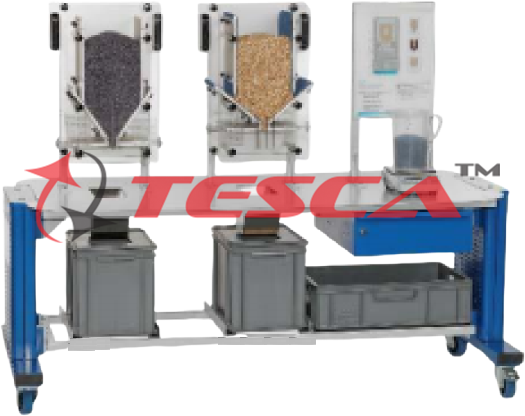
Order Code: 32112
Category: Fluid Mechanics Lab
Features: Determination of the flow properties of bulk solids using a ring shear tester for the design of silos Easy handling based on unlimited shear travel Professional analysis software Tesca Flow Properties of Powder or Bulk Solids dete...
SPECIFICATION
Features:
Determination of the flow properties of bulk solids using a ring shear tester for the design of silos
Easy handling based on unlimited shear travel
Professional analysis software
Tesca Flow Properties of Powder or Bulk Solids determine how it behaves during handling. For example, the material may flow irregularly out of silos, or the flow of bulk solid may come to a stop. In order to avoid these problems in practice, silos can be designed on the basis of measurements using shear testers, such as the Jenike shear tester or a ring shear tester.
In a ring shear tester, a bulk sample is contained in a ring-shaped shear cell. A normal force is exerted on the sample by way of a lid. A hanger from which a variable weight is suspended generates this normal force. A motor moves the shear cell relative to the lid in order to apply shear to the sample. For compaction (pre- shearing) the sample is subjected to a large normal force. An electronically amplified force transducer measures the shear forces which are then recorded by data acquisition software over
time. After pre-shearing, shearing to failure is executed with a reduced normal force (strength measurement) and likewise recorded by the software. From the sheer force characteristics, properties such as the compressive strength and internal friction of the bulk solid can be determined. To determine the density of the bulk solids, the volume of the bulk sample is ascertained by recording the lowering of the lid using a vernier caliper gauge. So as to also take into account the influence of the hopper wall material on the outflow behavior, a separate measurement is performed with a ring-shaped sample of the wall material.
Evaluation software is available to determine the flow properties from the experimental results. The flow properties identified are used to determine the optimum geometry of a silo’s discharge hopper. Trainer 32111 is provided for practical verification of the design results obtained in terms of mass flow/funnel flow.
Specifications:
1. Design of bulk solids silos using a ring shear tester
2. 1 ring-shaped shear cell to determine yield loci
3. 1 ring-shaped shear cell with a sample of wall material to determine wall yield loci
4. Shearing of the bulk solid sample by motor rotation of the shear cell
5. Vertical loading of the sample via ring- shaped lid with weights
6. Force sensor to measure the shear forces
7. Vernier caliper gauge to measure the change in height and density of the bulk sample
8. Valuation software to determine the relevant bulk solid parameters
Technical Specifications:
Shear cell
Sample volume: approx. 70cm3
Material: aluminum
Shear cell with a sample of wall material
Sample volume: approx. 15cm3
Material: aluminum Motor
Power consumption: max. 75W
Ÿ Speed: 500…3000min-1 1 set of weights
4x 500g Ÿ 2x 200g Ÿ 2x 100g
2x 50g Measuring ranges
Shear force: 0…40N Ÿ Balance: 0…1000g Experiments:
Recording the shear force characteristics of bulk solids
Yield locus and wall yield locus design
Determination of flow properties
s Compressive strength
s Internal friction
s Density
s Wall friction angle
Determination of the optimum hopper geometry of a bulk solids silo
Requirements:
Mains Power 220 – 240V @ 50Hz, 1Ph

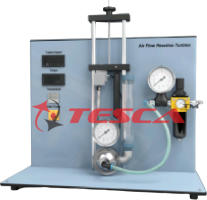
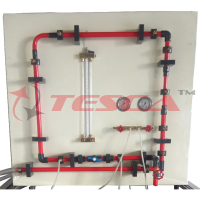
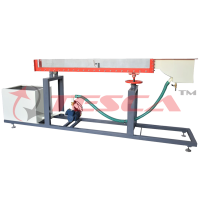
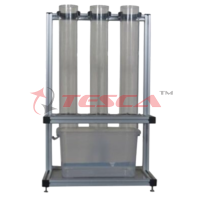
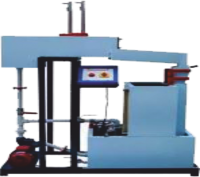

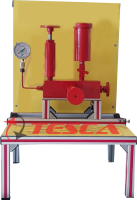
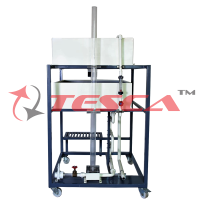
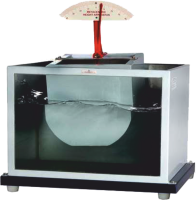

 91-9829132777
91-9829132777